By John Markwell | Contributing editor
Right up front, we admit to never having been a handgun bullseye shooter.
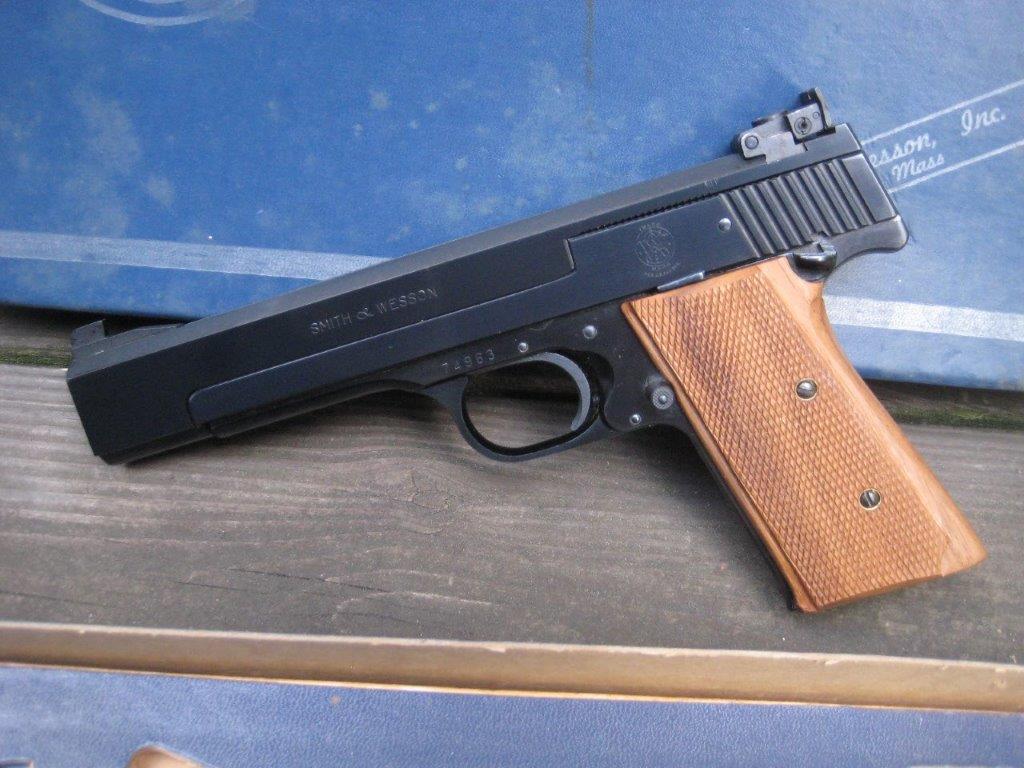
We shot small bore rifle through college but burned out on that and sold our gear soon after graduation. After moving to the mountains, our shooting activities were centered around hunting. That is until we discovered Practical Pistol in 1977. We have accumulated more handguns than rifles in the intervening years.
Our weakness for Smith & Wesson revolvers and 1911 pistols is obvious to anyone who visits our gun room and, although we love centerfire handguns, revolvers for the lowly .22 Long Rifle cartridge have a special place in our heart. However, for no particular reason, we have always lusted after a S&W Model 41 semi-automatic target pistol. We’ve shot Model 41s owned by others over the years and were always impressed by their accuracy, reliability, and wonderful workmanship.
The Model 41 .22 Long Rifle target pistol was introduced in 1957, when Smith & Wesson was under the leadership of Carl Hellstrom. There were a few odd variations of the Model 41 (like an aluminum slide version in .22 Short) but most commonly they were, and are, found with barrels of 7 and 5 1/2 inches. The model 41 is a single action blowback semi-automatic pistol with ammunition fed from a single stack 10 round magazine. The grip angle is the same as the 1911 pistol at 105 degrees. At 41 ounces, the Model 41 settles well in the hand with recoil being negligible for the most part.
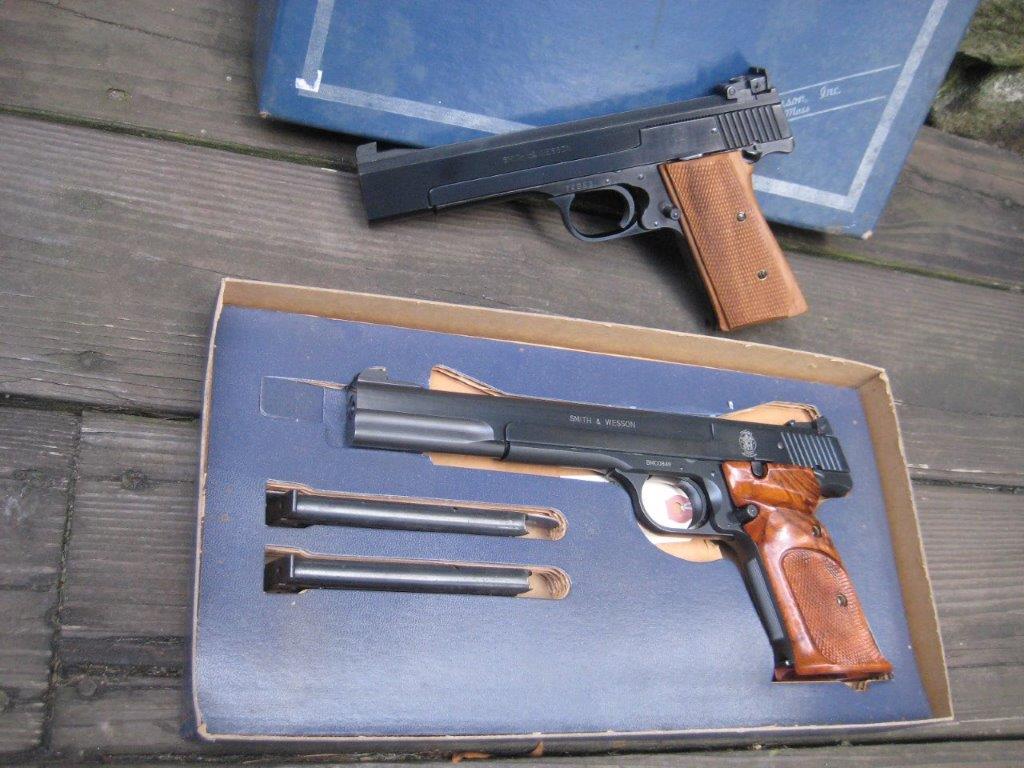
Acquired at the Tulsa gun show in November of 2018, the 5 ½-inch Model 41 shown here satisfied our long desire to own a premium target pistol; it wasn’t, however, in the plan.
Day two of rambling around the Wanenmacher show found us down in the lower level and just about ready to call it a day when we spied the Model 41 on a table with a bunch of other stuff and a big sign that read “Estate Sale”. When we flipped over the tag attached to the trigger guard we noticed the price had been scratched out and reduced three times; hum? This had possibilities. We asked to examine the pistol (gun show manners you know) and immediately noticed the left wing of the rear sight blade was bent; the gun had obviously been dropped and landed directly on the sight. So, we got out our glasses and gave the gun a good hard look. This Model 41 has the cocking indicator pin at the rear indicating it has been in service since the mid-1960s. For being almost 60 years old this old Model 41 was in awfully good shape. Over all the gun would rate better than 98% if not for the buggered up rear sight. The two magazines showed signs of a lot of handling in the form of some pitting but were fully functional and the walnut stocks also showed considerable use. The bluing on the frame, slide and barrel however was as perfect as the day it left the factory; this was a very nice old 41 and after a bit of haggling it was ours, original box and all.
Upon our return home, we immediately dug around in the gun room for an assortment of 22LR ammunition with which to test our new acquisition. We also got on the phone and ordered up a set of stocks from Herrett’s Stocks that were smaller than those on the gun and more like those on a 1911.
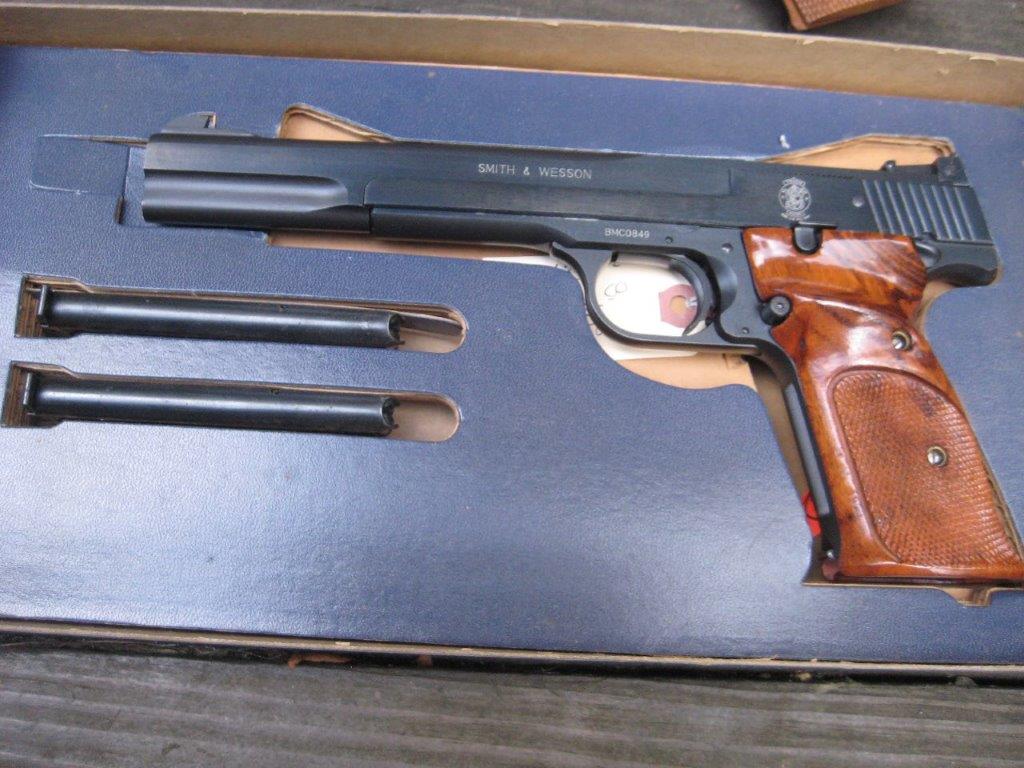
Heading off our range we were pretty psyched to see if this old Model 41 was going to live up to our expectations. After a few shots at ten yards (to see if the sights were even remotely regulated), we stuck up a 25-yard pistol center at that distance. Firing from a rested position over sand bags, our first group fired with the Model 41 Winchester Western 36-grain hollow point ammunition measured right at 2 ¼ inches. Switching to a target that consisted of 2 5/8 by 2 1/8 inch white rectangles we settled in to shoot groups with an assortment of mostly match grade .22 Long Rifle ammo. After a few sight adjustments we had our new (to us) 41 printing pretty much on the white targets. Working through the assortment of .22 Long Rifle ammunition was great fun and the initial results can be seen in the accompanying chart. Needless to say, the S&W Model 41 is a shooter.
Ammunition tested Group size (inches)
Win. Super X Hi Vel 1.523
Win. M 22 Sub Sonic 2.178
CCI SGB 40-grain 2.174
LAPUA Master L 1.650
SK Std. Plus 1.331
ELEY/Rem. Match EPS 1.227
ELEY/ Match (Black-Box) 1.528 (8=.552”)
Switching back to a 25-yard pistol center for a target, our plan was to fire several 10-shot strings with the two Eley Match loads and the SK Plus ammunition. These rounds showed the most promise on our test targets. The 10-ring of the 25-yard Standard American Pistol Target measure right at 3.35 inches with the center X-ring measuring 1.56 inch. All of the ammunition types tested were capable of 10-ring accuracy but the Eley Match and the SK Plus showed the greatest promise. With the Eley/Rem load turning in the smallest test groups, the Eley black box clustering 6-8 shots into one ragged hole at 25 yards and the SK consistently grouping just a bit over 1.25-inches we were curious to see what kind of scores we could shoot with each. We did not even try to shoot in the one-handed classic bullseye stance however; at this point in our life we knew better than that. Firing from a sand bag rest, our scores from the 25-yard line were as follows:
SK Std Plus- 100-8x
ELEY/Rem Match EPS-98-7x
ELEY/Match (black box)- 100-5x
The Model 41 perked right along with no malfunctions of any sort and it was pretty easy (from our rested position) to keep most of our shots in the 3.35 inch 10 ring. If any criticism cold be made of the pistol it would be that the trigger pull is overly light for our liking as we got the occasional “oops” shot during our testing.
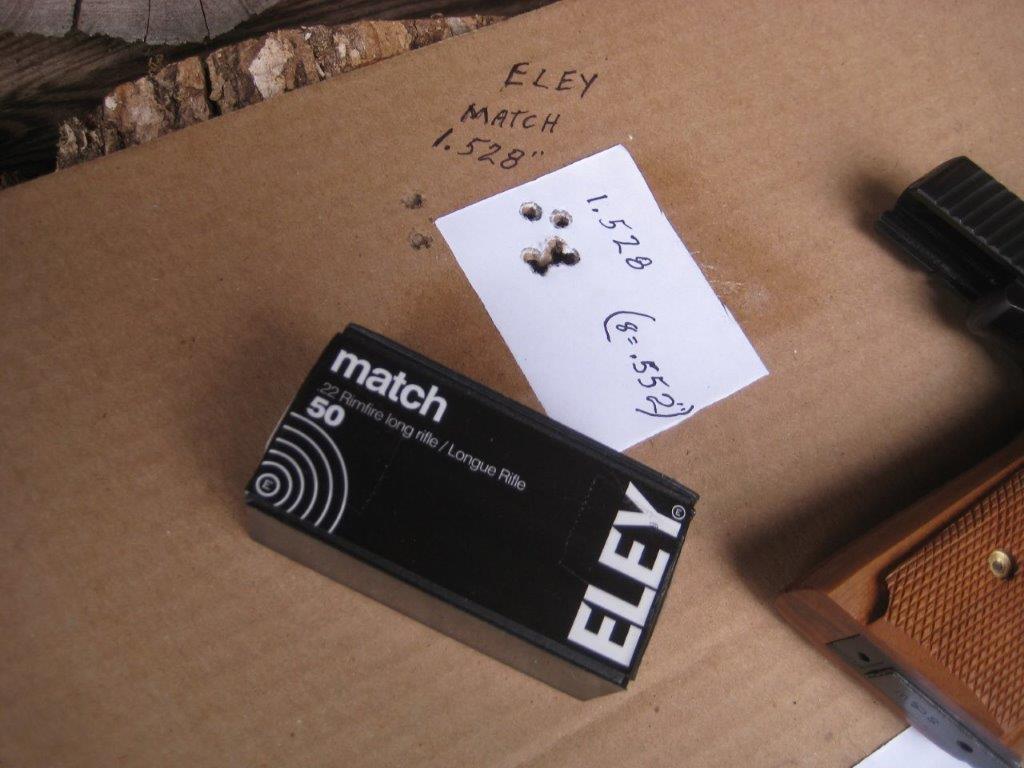
There are several variations of the Model 41 listed in the 1966 Gun Digest. Barrel lengths originally offered were 5, 5 ½ and 7 3/8 inches with the 5 ½ inch being listed as “heavy”. Muzzle brakes were and are available for the 7 3/8 inch barrels as well as barrel weight system. Around 1960 a small run of Model 41s in .22-Short was offered as well as a limited number of accessory barrels chambered for the .22-Short. As near as we can figure these barrel lengths have come and gone from the catalog over the years and currently Smith and Wesson offers the model 41 with 5.5 and 7 inch barrels and for the .22-Long Rifle only. By the way, the current MSRP of the Model 41 is just a hair over $1600 which is a far cry from the 1966 price of $100.
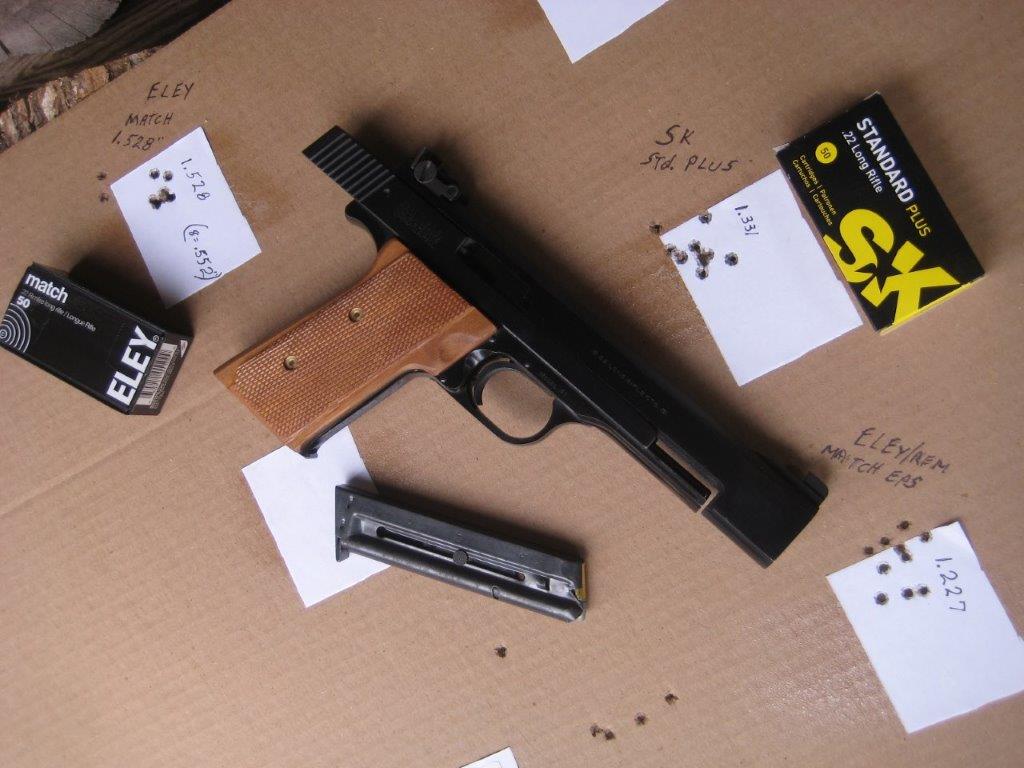
Wanting to compare a 1960s vintage 41 to a newer one, we had a friend bring us his long barreled pistol which was made in the ‘90s. Absent the cocking indicator pin at rear, this 7 inch barreled 41 is every bit as nice as our 5-inch model and according to its’ owner it shoots like “hotcakes”! It’s obvious the folks at Smith & Wesson have historically lavished much attention on these premium pistols and continue to do so to this day.
What we end up doing with this 60-year-old Masterpiece is still up in the air. Not being a bullseye shooter, it seems a shame to just tuck it away in the gun safe. For now, we’ll take it to the range, shoot it and continue to enjoy its’ accuracy and workmanship. A Fall trip to the Squirrel woods may also be in order. Possibly we’ll find a deserving home for it somewhere down the line but for now we finally have our long lusted after Smith & Wesson Model 41. This pistol truly should have been cataloged as a Masterpiece.



